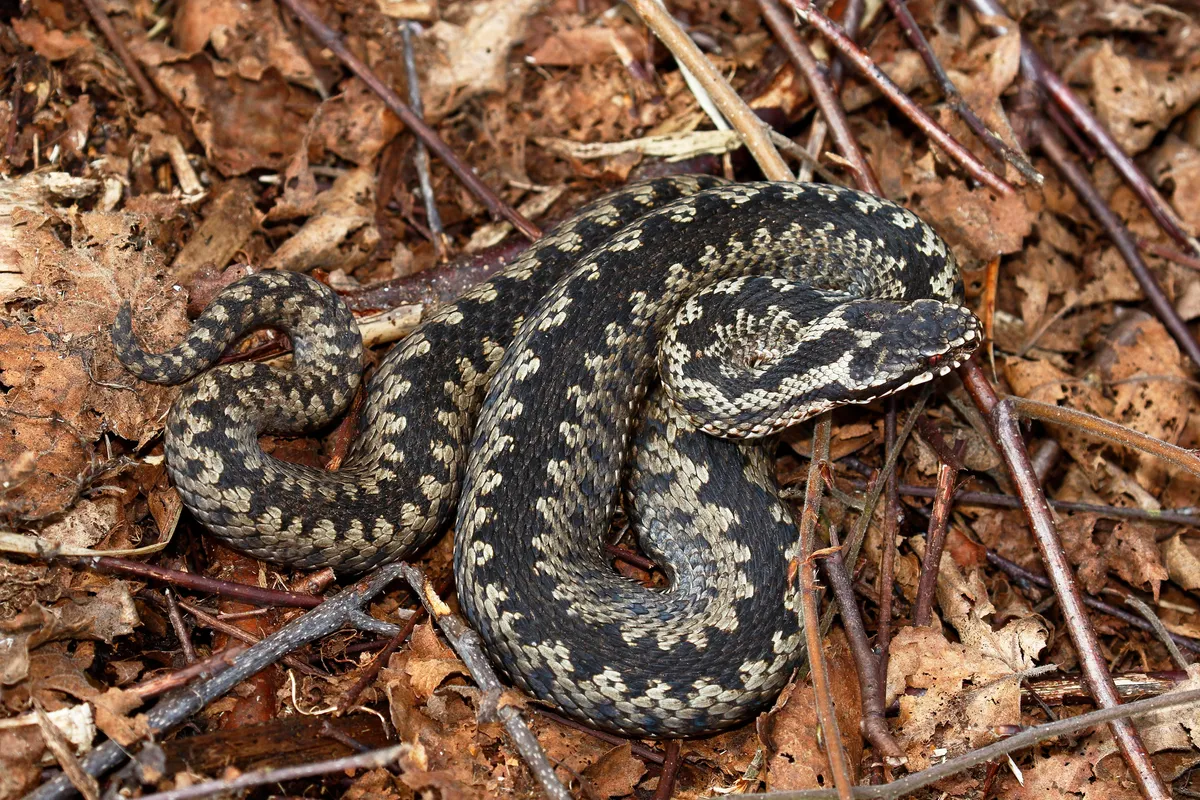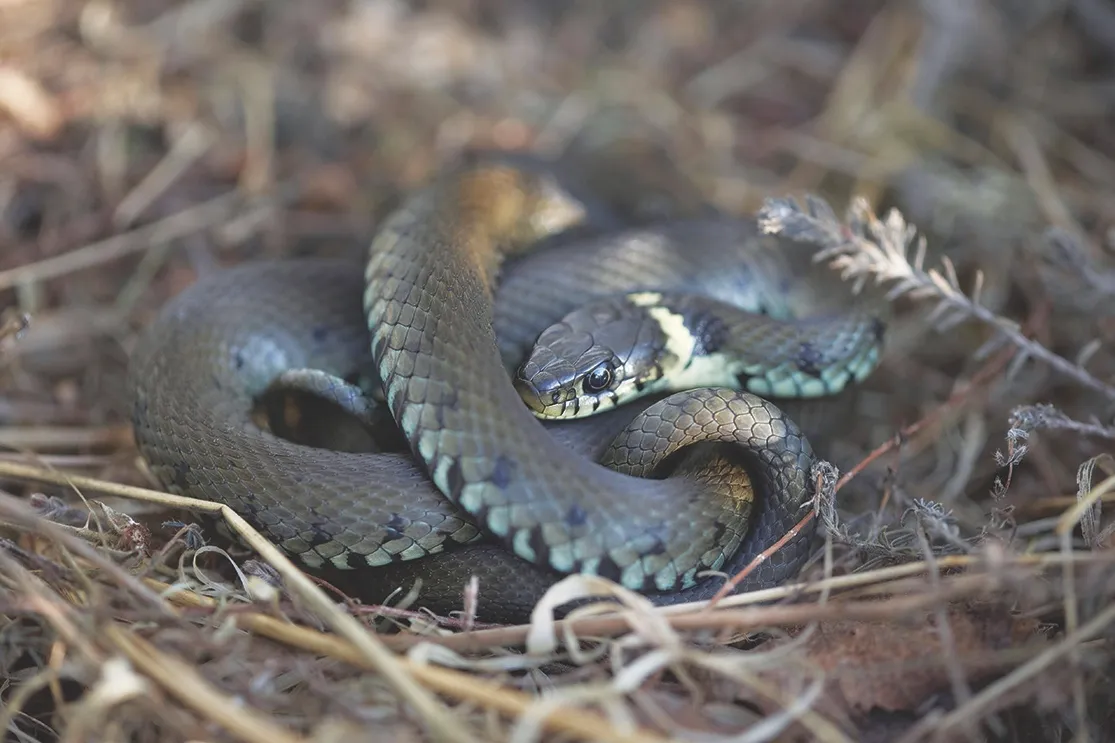How many snakes are there in Britain?
There are three native types of snake in the UK: adder, grass and smooth snakes. All three are most active in warm weather, and look to hibernate in the colder months. However, with increasingly mild winters, snakes are emerging as early as mid-January to look for food.
Our expert guide explains which snakes live in the UK, whether they're dangerous to humans, and what to do if you get bitten by a snake.
How to identify British snakes
1. Adder (Vipera berus)

A grey-brown snake with red eyes and characteristic zig-zag markings along its spine. Just 50-80cm long, it is found on heaths, moors and woodlands but has declined markedly in the past 30 years and is now absent from several Midlands counties.
The adder is Britain’s only venomous snake, and uses its poison to subdue small rodents, lizards and ground-nesting birds. They have been known to wiggle the tips of their tails to resemble a worm or caterpillar and thus draw a bird closer. This is known as ‘caudal luring’.
The adder's breeding season starts in April-May, with the young first emerging in August/September. Female adders are unusual: they incubate their eggs internally and then give birth to live young.
Adders emerge from hibernation very early in the year and can be seen sunning themselves on south-facing slopes and hedgebanks on warmer days as early as late January.
Did you know adders are the most northerly-living snake?
Are adders dangerous to humans?
An adder bite can be painful and cause an inflammation, but is really only dangerous to the very young, ill or old. Adders are very shy and will usually hide quickly from the heavy-footed approach of a human. They tend to bite only when stepped on, or if panicked at close range.
What to do if you’re bitten by a UK snake
- Try not to panic – most UK snake bites are not serious and can be treated
- Seek medical attention
- Keep the part of your body that was bitten as still as you can
- Try to remember the colour and pattern of the snake
- Do not try to bandage or tourniquet the bite
- Do not attempt to suck out the venom
See nhs.uk/conditions/snake-bites/ for advice.

2. Smooth snake (Coronella austriaca)

The smooth snake is lightly smaller than an adder and superficially resembles it, but lacks the zig-zag markings along the back. A secretive burrowing snake confined to a handful of counties from Surrey to Dorset, with reintroduced populations in Devon and West Sussex. Hunts other reptiles, which it ambushes.It has small teeth that can inflict a mild scratch-like bite on humans but there is no venom and no danger.
This beautiful but secretive creature is found only in a few sites on the sandy lowland heaths of southern England. It is notable for its delightful dot-dash brown markings – a sort of morse code along its back. It takes its ‘smooth’ name for the fact that, unlike the adder and grass snake, the scales that cover and protect its body do not have keels on them so feel soft to the touch.
PODCAST: In search of smooth snakes
Join Fergus Collins as he meets smooth snakes one of Britain's rarest habitats – lowland heaths, in Dorset, in the company of Owain Masters and Nick Dobbs from the Amphibian and Reptile Conservation Trust (ARC).
Listen now
3. Grass snake (Natrix helvetica)

The grass snake is Britain’s longest snake, reaching up to 150cm. It has a grey-green body with delicate yellow ‘mask’ marking on its head. The grass snake prefers wetlands where it hunts frogs, newts, fish and small mammals, sometimes swimming underwater to catch its prey. It is the UK’s most common and adaptable snake and is often found in gardens, particularly compost heaps.
Are grass snakes dangerous?
Not to humans. Grass snakes have small teeth and there are few records of them ever biting humans – the bite is painless.
Which British snakes can swim?
Grass snakes are generally found close to water and can swim underwater to catch food.
Discover more snake facts

